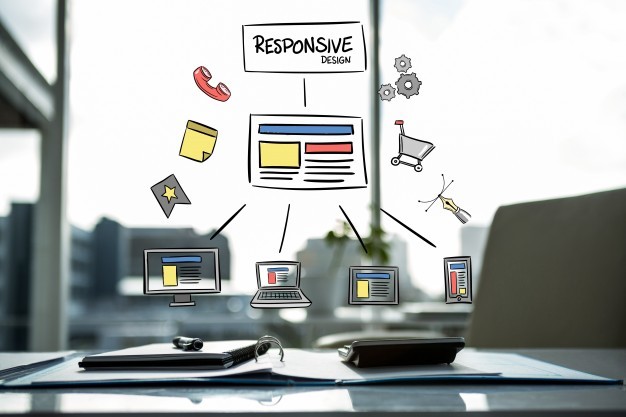![Web Design: 10 Trends for 2022 & Beyond [Infographic]](https://blog.red-website-design.co.uk/wp-content/uploads/10-Web-Design-Trends-Predictions-for-2022-Beyond-768x4639.jpg.webp)
Your website is like your company’s “front door” for prospective customers.
Web Design: 10 Trends for 2022 & Beyond
It’s easy to see why a crisp, professional design, a user-friendly interface, and behind-the-scenes technical prowess are big factors in attracting new business and retain existing clients.

So you need to know how effective your current web design is, and examine some of the hottest design trends on the Internet.
Here are 10 design trends that you can expect to see in 2022, and beyond.
1. Dynamic Content
Dynamic content it’s the content that will adapt to specific user needs and circumstances. For instance, a dynamic website may display different information to users based on their current location, their past browsing behavior, or a recent purchase they made.

Websites with dynamic content have high engagement and conversion rates. This will continue to be a hot trend for the future.
2. Voice Search Optimization (VSO)
Voice search is becoming popular around the world. Stats show that there will be over 135 million voice assistant users in the United States by 2022.

As consumers around the globe become more and more comfortable with Alexa, Siri, Cortana, Google, and other virtual assistants, expect to see an increasing number of web designers make voice search optimization a priority.
3. Accessibility
Like voice search optimization, expect to see a trend about accessibility across the Internet. Web designers will continue to incorporate page features that don’t rely on keyboard-based input, such as voice command, virtual reality, augmented reality, etc.
4. White Space
The strategic use of white space (or “negative space”) will be the new web design trend
By using white space, designers can keep their page layout simple, help users to focus on important pieces of content (or CTAs), and make their site more suitable for dynamic scrolling.

Also, white space doesn’t have to be white. It can be any color but without contextual meaning.
5. Dark Mode
More designers than ever before are using dark color schemes for their websites. Even Google Chrome is optimized for “dark mode” browsing.
A dark mode design can offer a vibrant, refreshing alternative to more traditional color templates. It can also minimize eye strain for your users, and highlight the content and imagery that you want to emphasize on the page.
6. Mobile-Friendly
Over 53% of global website traffic is now generated via mobile devices. Most of the users accessing the Internet via smartphone or tablet. So designers will continue to focus on making their websites mobile-friendly.

7. Dynamic Scrolling
Dynamic scrolling (single-page scrolling) means that your featured content is all contained within one page.
Dynamic scrolling is a great way to tell a story on your website. It also minimizes the friction that your users may feel as they browse through your site, no matter what device they’re on. It’s great for “thumb-scrolling!”
8. Interactive Content

Consumers love interactive content. Whether it’s a quiz, a poll, etc. People are attracted to websites that feature relevant and valuable interactive content. Expect to see designers leverage interactive content as part of their site-building approach in 2022, and in the years to come.
9. Fast Page Load
Internet users don’t like to wait for pages to load. Most users will bounce in less than 5 seconds.
Stats show that 2.4 seconds was the “sweet spot” for page load times: when pages can load quickly, the conversion rate doubled compared to sites that loaded within 4.2 seconds.

The faster your page loads, the better, for both the end-user and better performance in the search engines. Expect to see designers do whatever they can to simplify site design, free up processing space, and promote lightning-fast load times.
10. Local SEO
Local SEO will stay strong among web designers in 2022. Local content is already critical for many businesses, and its importance will only increase as consumers use the Internet to search for all kinds of local information.

Web content with SEO keywords like “near me” or “close by” has seen an explosion over the past several years. Stats show that 46% of all Google searches are already driven by location.